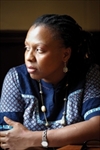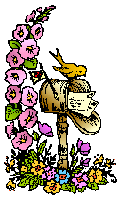Lola Shoneyin’s The Secret Lives of the Four Wives is set in modern-day Nigeria where men are supreme and wives are meant to breed children — an obsession of Baba Segi and the reason he has four wives. However, his newest wife, Bolanle, is the youngest and most educated of the four — Iya Segi, Iya Tope, Iya Femi, and Bolanle — and her entry into the household generates jealousy and change.
Baba Segi’s only concerns are being catered to by his wives and procreation, and when Bolanle fails to produce an heir after much “pounding” (his words), he seeks counsel from his male friends and the “Teacher,” who advises him to bring her to the hospital. It is then that the jealousy of the women becomes more concentrated on Bolanle, as they struggle to protect a family secret.
“Even a child would have worked out why my father was extolling qualities that had previously vexed him; I was compensation for the failed crops. I was just like the tubers of cassava in the basket. Maybe something even less, something strange — a tuber with eyes, a nose, arms and two legs. Without fanfare or elaborate farewells, I packed my bags. I didn’t weep for my mother or my father, or even my siblings. It was the weeds I didn’t get the chance to uproot that year that bothered me.” (page 91)
Shoneyin adopts what many might consider a very masculine prose that creates a crass view of sex in a polygamist household and a not-so-favorable perspective of Baba Segi, the husband. Even when the narrative shifts to Bolanle’s first-person point of view, the language is harsh, making it difficult for readers to discern the speaker with each shift. However, these shifts gradually become easier to discern, and each perspective adds a new layer to the narrative and deepens the complexity within the Segi family.
Readers may want more background and detail of Nigeria and its customs or at least its a more vibrant picture of its places and culture. Shoneyin generates a harsh world that is not only Nigeria, but could be any country at any time in which polygamy is the norm and women are seen as second-class citizens. What is absent here is a clear sense of place and time — a setting that could have made the story more vivid and memorable.
The Secret Lives of the Four Wives may have been long-listed for the Orange Prize, but the characters and story are reminiscent of other oppressed women under similar circumstances. However, what makes this novel unique is the four wives and their perspectives on why they became wives of Baba Segi — what circumstances led them to that choice and why they continue to stay. Each has a compelling story to tell, and while Baba Segi is not a sympathetic character, he does provide his wives with an oasis from their pasts and with the confidence to rule their own lives. Overall, readers will get a glimpse into another world and of what it means to be one of many wives.

Lola Shoneyin lives in Abuja, Nigeria, where she teaches English and drama at an international school. She is married, with four children and three dogs. Please visit her Website and her blog.
Please check out the other stops on the TLC Book Tour by clicking the icon.


 First I want to wish my husband a happy birthday. I’m sure he’s starting to feel his age, but I keep telling him that age is just a number and he doesn’t look a day over 25. I hope that you have a great birthday, honey, and keep smiling now that our daughter is here. She adores her daddy, and I know you adore her. Have a great day off from work spending time with her. I wish that I could do the same.
First I want to wish my husband a happy birthday. I’m sure he’s starting to feel his age, but I keep telling him that age is just a number and he doesn’t look a day over 25. I hope that you have a great birthday, honey, and keep smiling now that our daughter is here. She adores her daddy, and I know you adore her. Have a great day off from work spending time with her. I wish that I could do the same.



